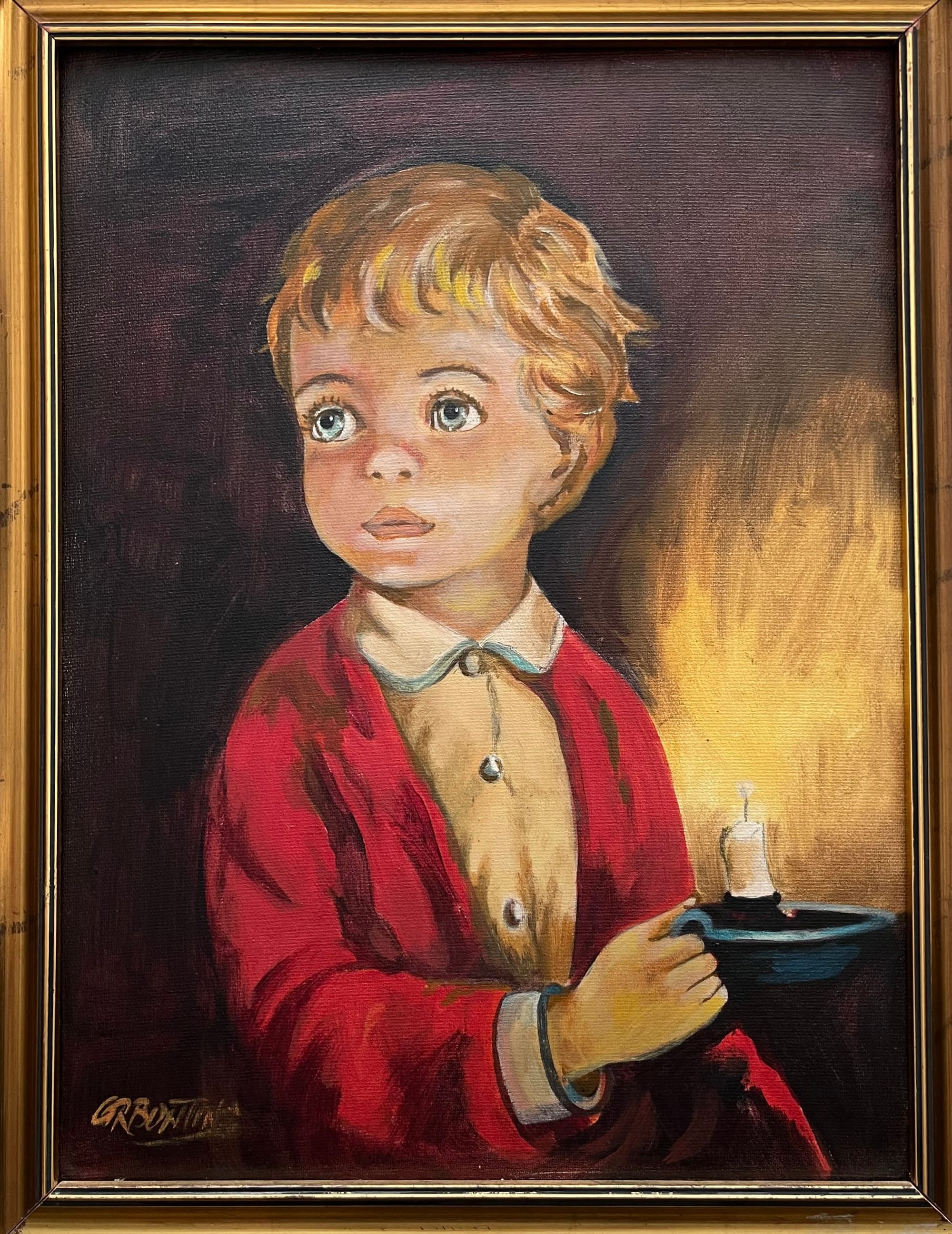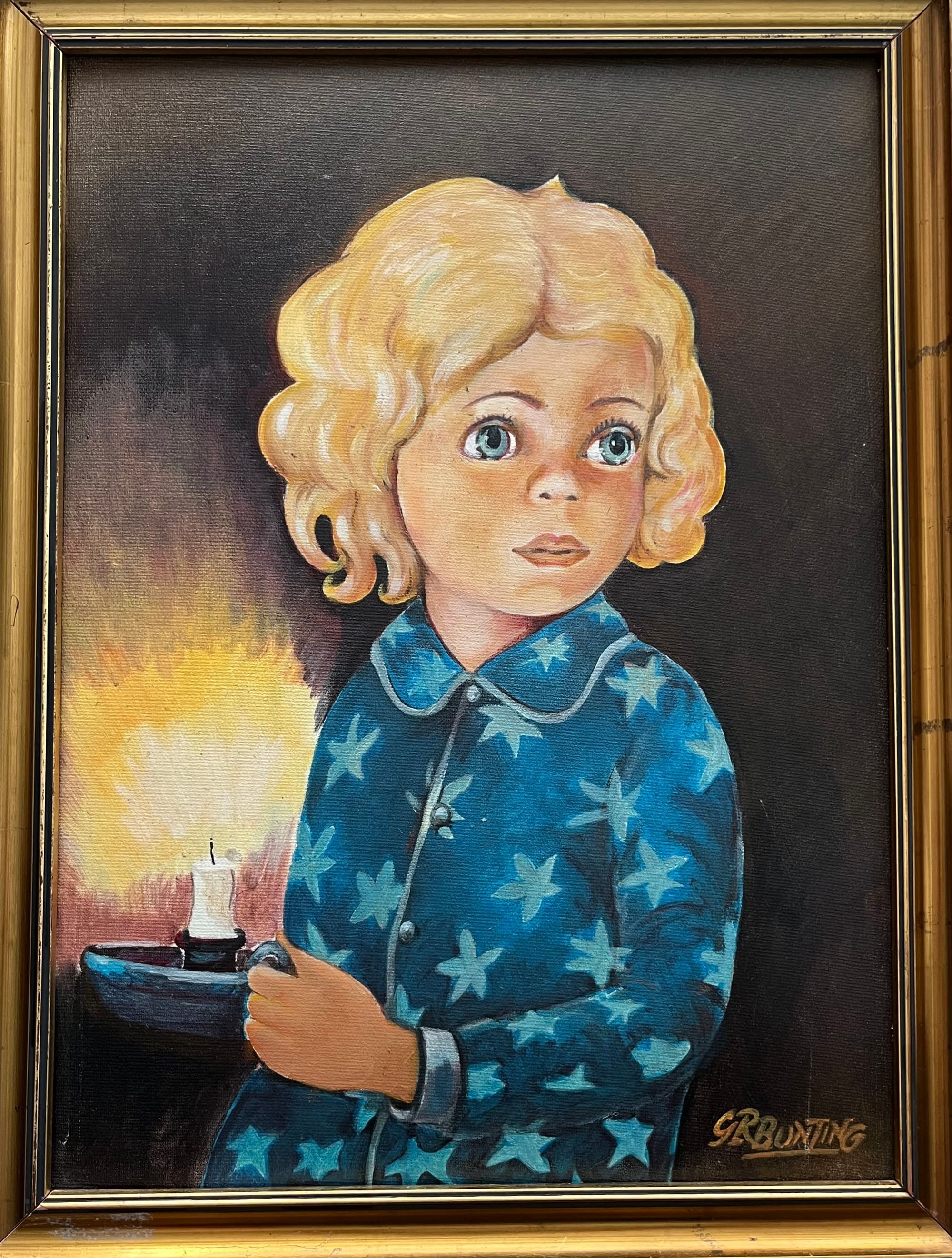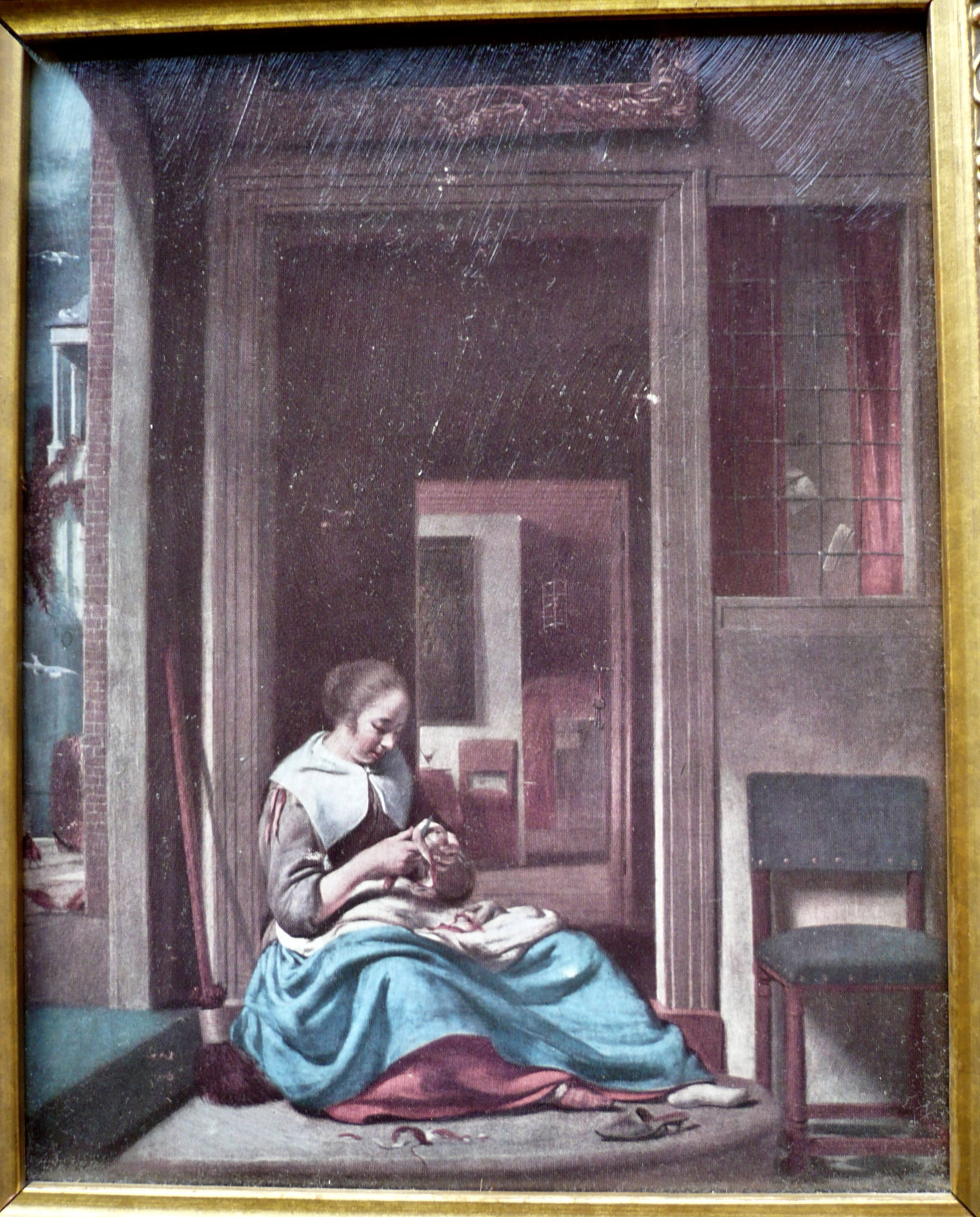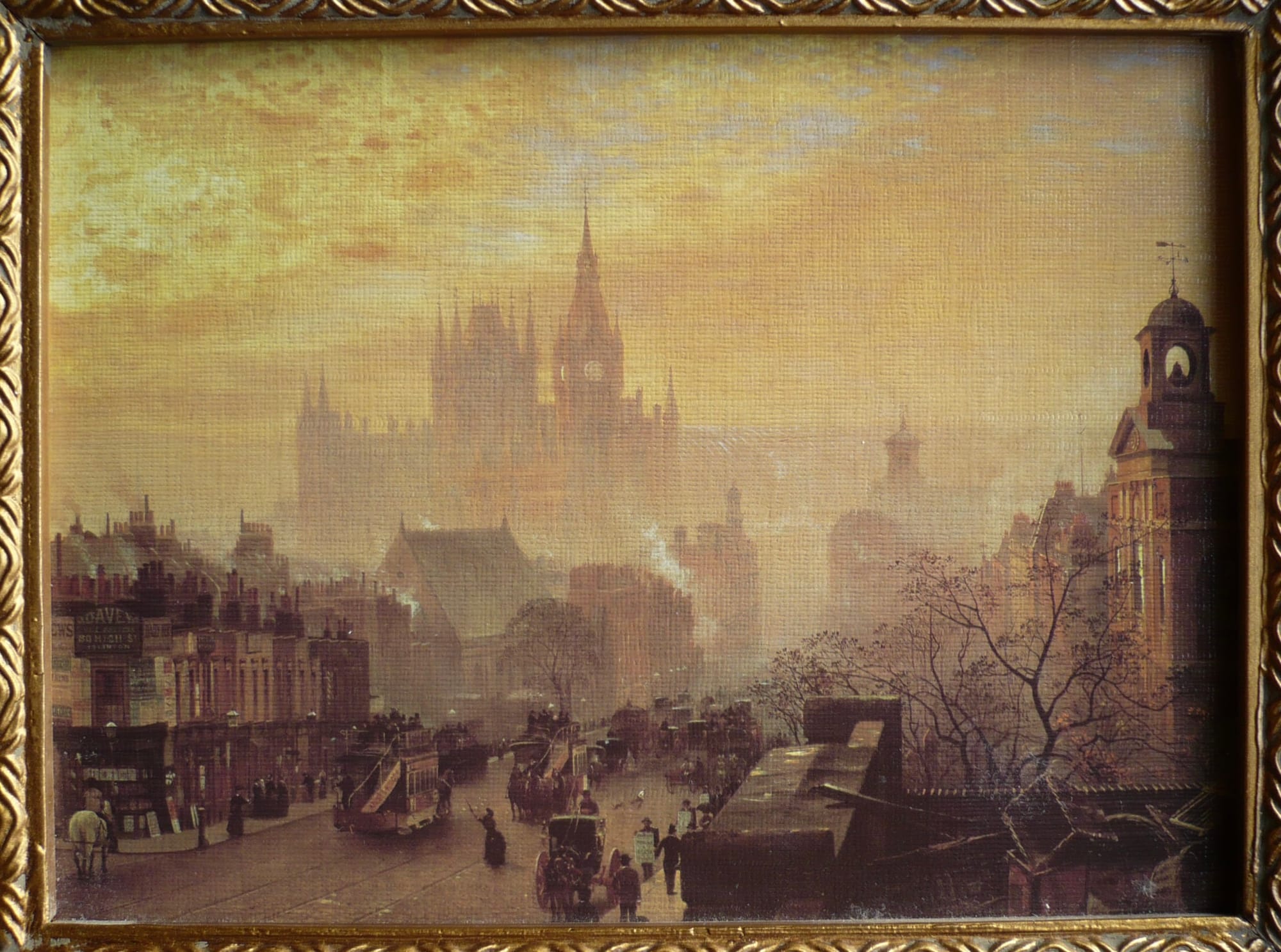Light & Silence – Intimate Portraits
A study in candlelight, domestic realism, and emotional nuance
GR Bunting’s Boy with Candle and Girl with Candle are masterclasses in mood—using light not just to illuminate, but to reveal. Cornelis Bisschop’s Girl Peeling an Apple continues this domestic intimacy, while John O’Connor’s London Sunset over Pentonville adds an urban melancholy. These works whisper rather than shout, drawing you into private moments where time seems suspended and emotion lingers in the shadows.
Boy with a Candle by G R Bunting
Purchased in Warwick, a town synonymous with high-quality antiques and quiet grandeur, this painting by G. R. Bunting is a study in light, solitude, and emotional tension. The boy, illuminated only by the flickering glow of a single candle, seems suspended in a moment of introspection—or perhaps revelation. His expression is unreadable, his posture still, and the surrounding darkness presses in like silence made visible. There’s a haunting quality to the composition. The candle doesn’t just light the boy’s face—it exposes vulnerability, casting long shadows that feel almost symbolic. Is that boy me? The question lingers. Is this a symbol that we are all holding a candle to find our way in life—to navigate the future? The ambiguity is part of the painting’s power.

Girl with a Candle by G R Bunting
Like its companion piece, Boy with a Candle, this painting by G. R. Bunting explores the quiet drama of light and solitude. But where the boy’s eyes seem to reflect fear and uncertainty, the girl’s gaze holds resolution and a hint of adventure. Her candle doesn’t merely illuminate—it glows with quiet intent, as if she’s not searching for a way out, but stepping forward into something unknown with purpose. This is also a reflection on us. We see darkness not as something to fear, but as a way forward. The future may seem dark, but it is only through exploration and courage that its shape begins to reveal itself

Girl Peeling an Apple by Cornelis Bisschop
Purchased in Lanark, Scotland, this classic oil by Cornelis Bisschop, painted in 1667, captures a moment of quiet domesticity with remarkable emotional depth. The young girl, absorbed in the simple act of peeling an apple, is rendered with tender precision—her posture relaxed, her gaze downward, as if lost in thought. The soft play of light and texture brings warmth to the scene, while the restrained palette and subtle chiaroscuro evoke a sense of intimacy and stillness. But who is she? Her modest clothing and quiet task suggest she may be a domestic servant, caught in a moment of routine. Yet her poise, the delicacy of her gesture, and the dignity with which she’s portrayed hint at something more—perhaps she is the Lady of the Manor, engaged in a quiet ritual of her own choosing. Bisschop leaves the question open, allowing the viewer to reflect on class, identity, and the emotional richness of the everyday.

London Sunset over Pentonville by John O'Connor
Purchased in a lovely private gallery just off Tottenham Court Road in London, this evocative oil by John O’Connor captures a moment of Victorian London bathed in twilight. Painted in 1884, the scene looks westward down Pentonville Road, with the spires of St Pancras Station and Hotel rising like sentinels against a softly glowing sky. The architecture is grand, but the mood is contemplative—a city pausing between day and night. Would you love to live in a London of yesteryear? A city without technology or distraction—where the rhythm of life was slower, and the skyline was shaped by spires, not screens. This painting invites that question. It evokes a time when life felt simpler, when the setting sun marked the end of a day rather than the beginning of another digital cycle. There’s a quiet romance in that idea—a longing for a London where stillness was possible, and reflection was part of the landscape. I know where I’d rather be: take me there now!
